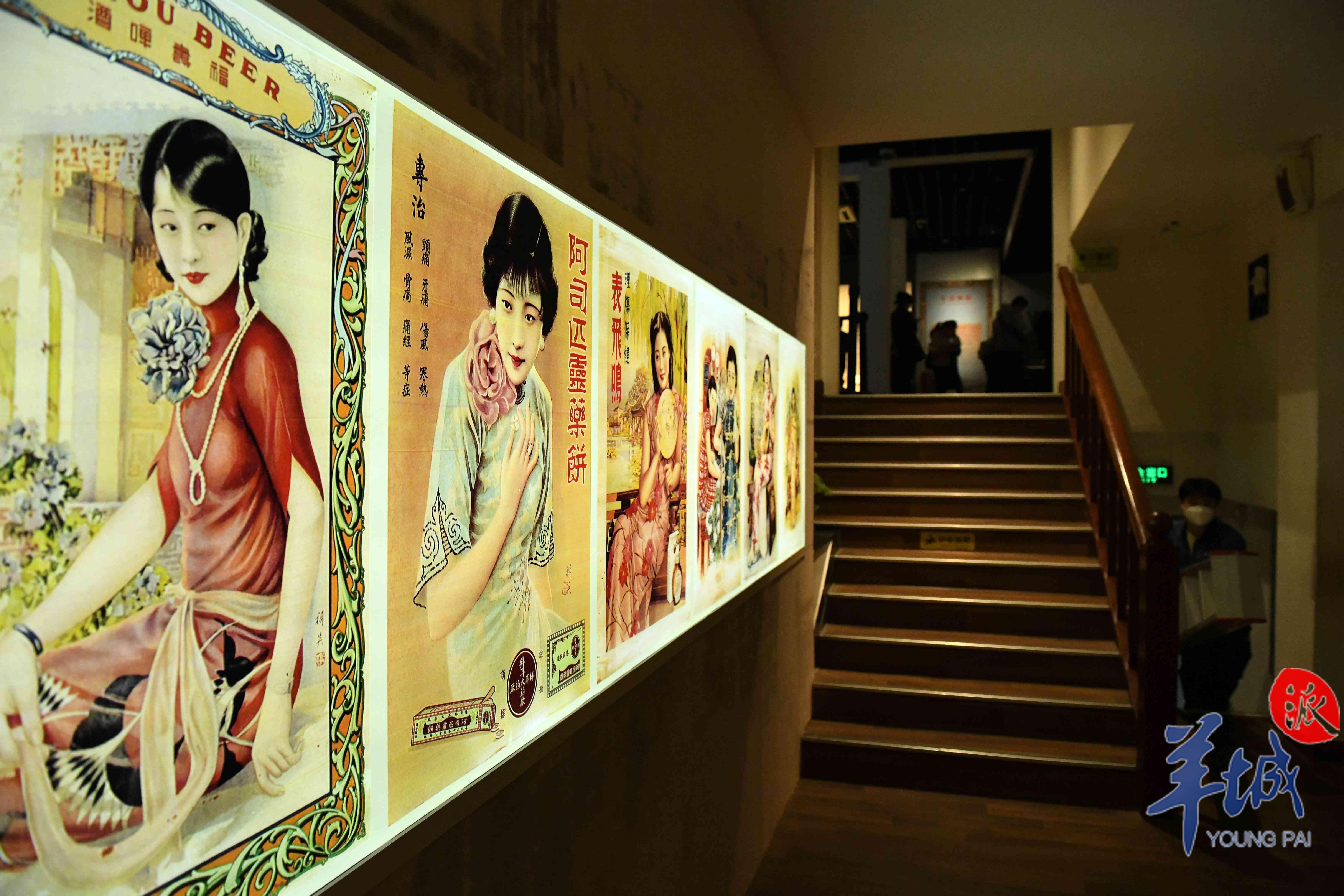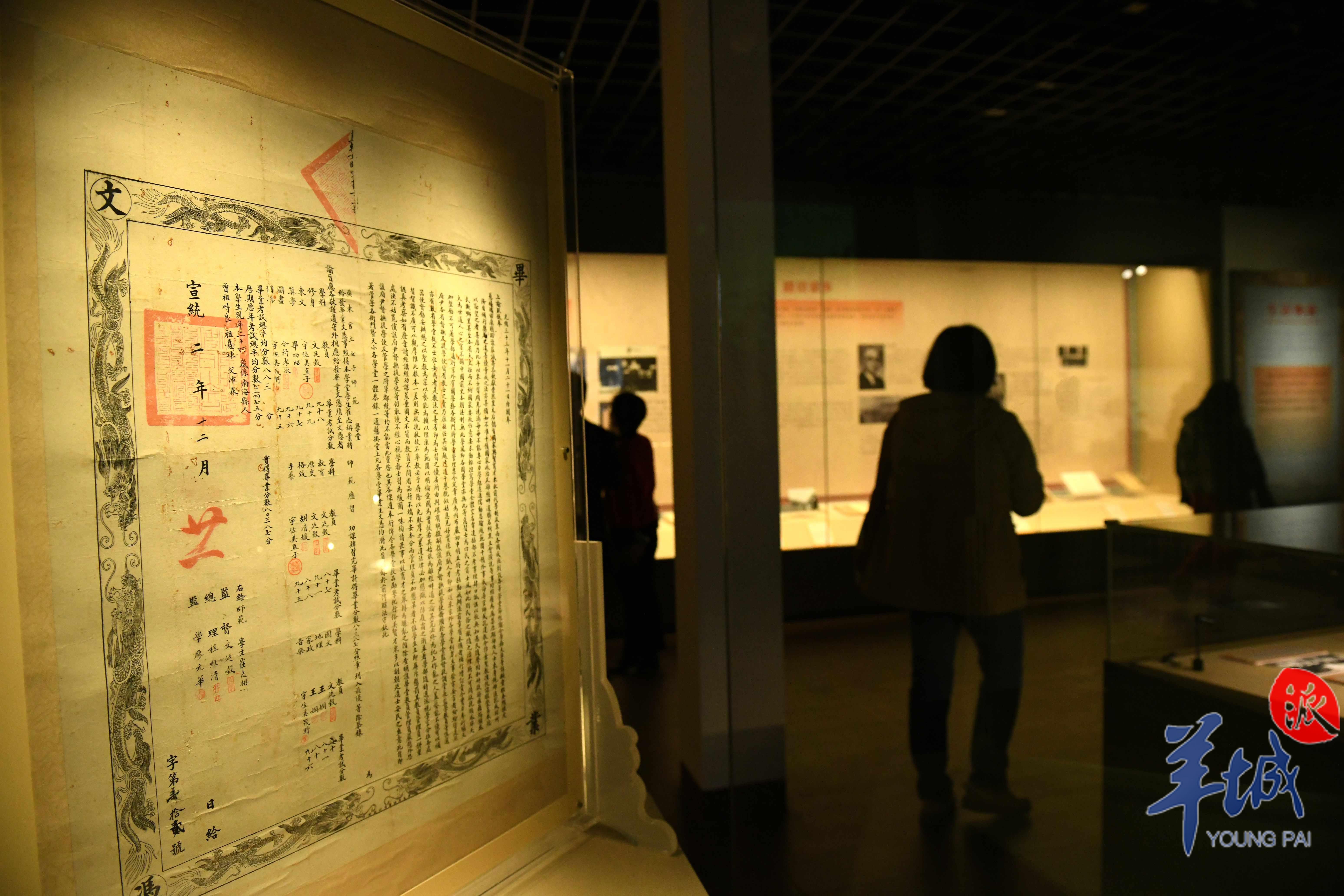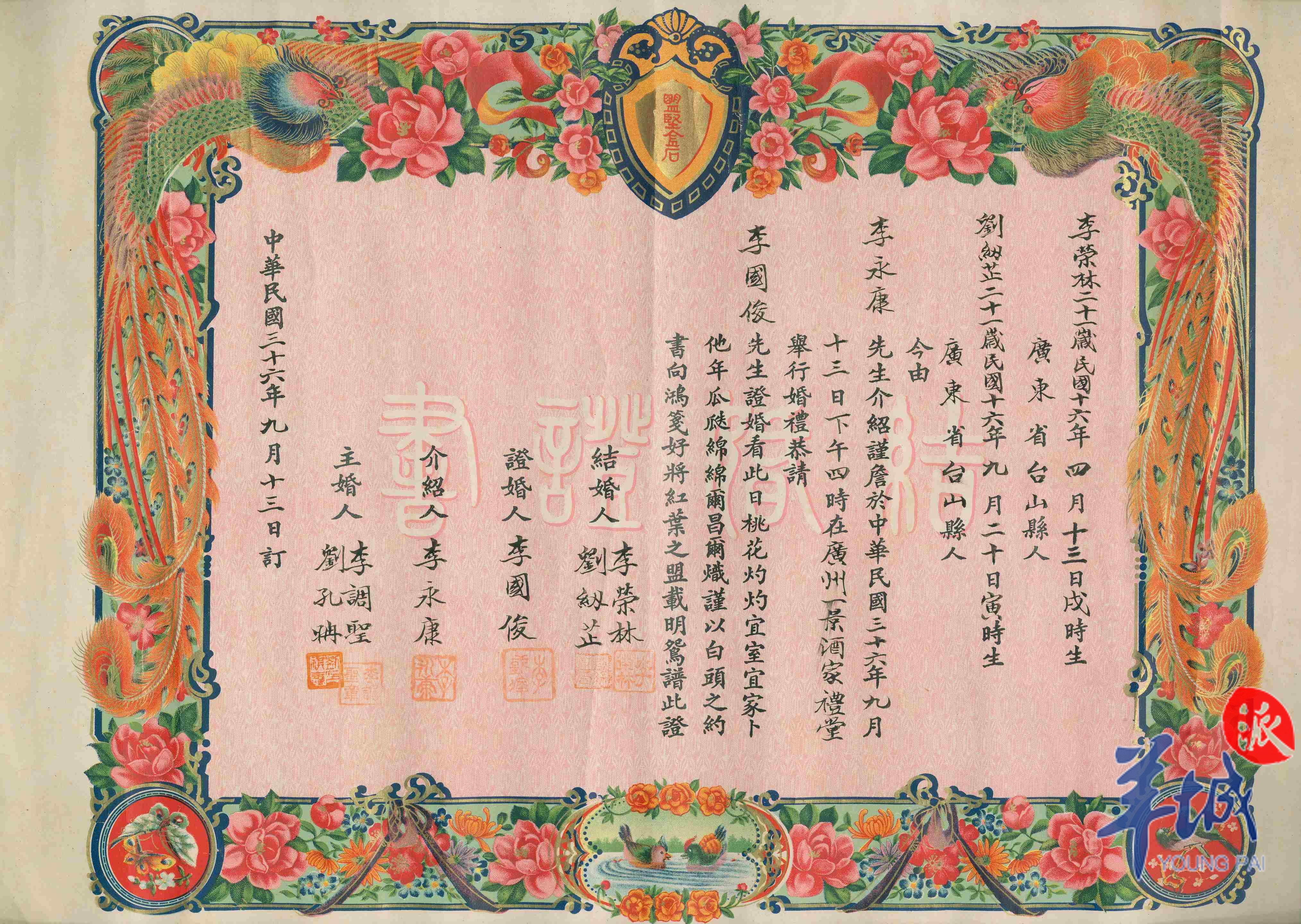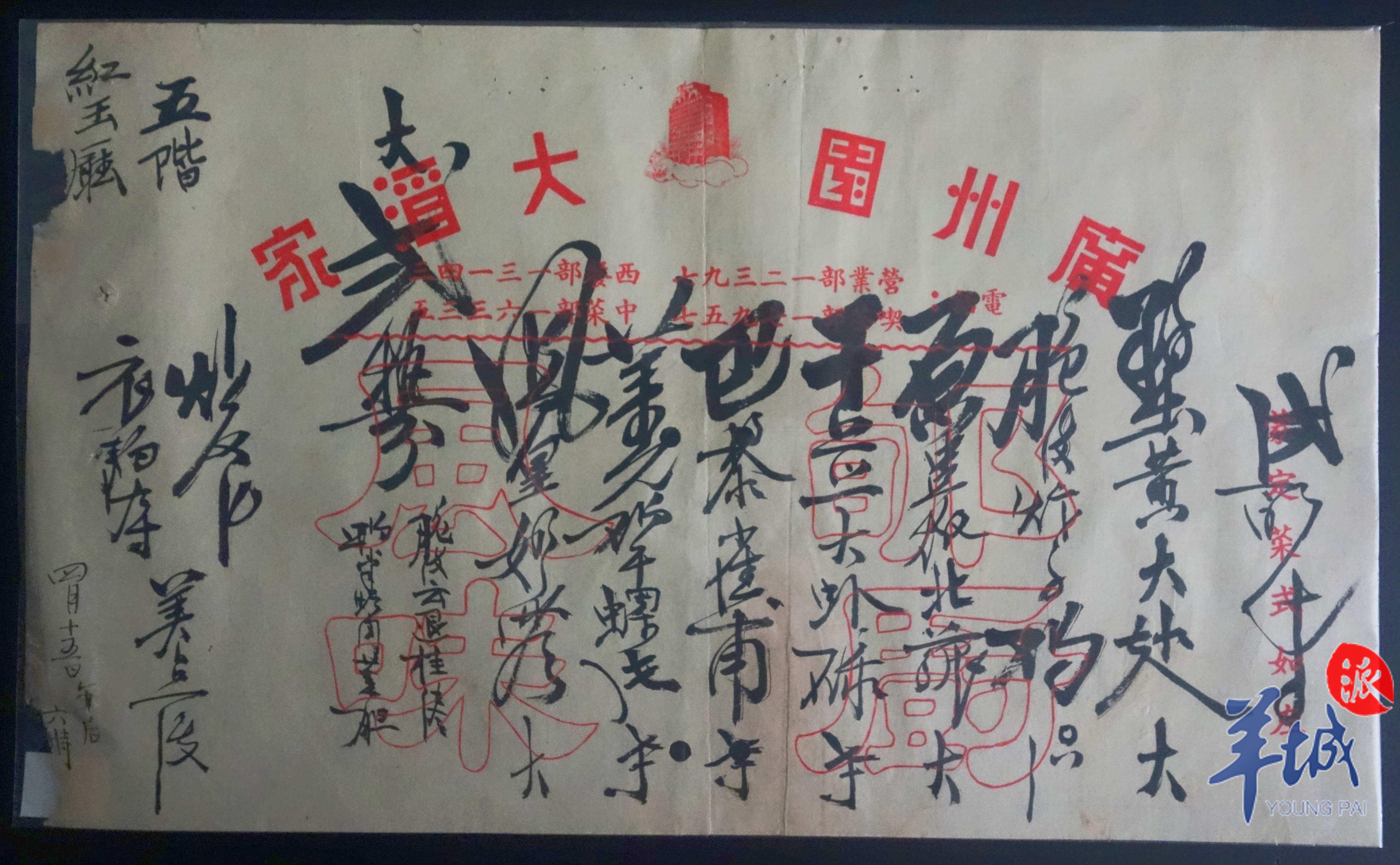
On March 8th, International Women's Day, the Exhibition themed "City Life in Contemporary Canton" was held in the Special Exhibition Hall of Zhenhai Building in Guangzhou Museum. Focusing on Guangzhou in the first three decades of the 20th century, the Exhibition centers on such three aspects as the old customs and new styles, enlightenment and education, and renewal of life, reflecting life reform and inner cultural renewal in contemporary Guangzhou. Among them, a number of artifacts on display provide a glimpse of the situation of women in Guangzhou a century ago.

In the exhibition hall, a diploma of Cui Zhinan, a graduate of the Guangdong Government Women's Primary Normal School in 1910, attracted our attention.
After the Revolution of 1911, the Guangdong Government Women's Primary Normal School was renamed Guangdong Women's Normal School, the first women's normal school in Guangdong. The diploma listed the subjects that the graduates had studied, the names of the teachers and the graduation exam scores, with a total of 13 subjects, including Japanese, mathematics, drawing, education, history, geography, physics, handicrafts, homemaking and music. Cui Zhinan graduated with a score of 80,387 and was listed as the most honored student.

"A hundred years ago in Guangzhou, women's right to education was gradually equalized by the introduction of the idea of 'equality between men and women.' In 1905, the Qing government abolished the imperial examination system and set up schools, after which western-style schools were commonly set up in Guangzhou. This diploma of Cui Zhinan in the museum is the physical evidence that women's education in Guangzhou was at the forefront of the country." Zeng Lingling, deputy director of the Guangzhou Museum, explained that some subjects such as handicrafts and housekeeping were taught in the schools to enable women to engage in some occupations in society without relying on family.
In addition to the situation of women, the Exhibition also outlines the life and culture of Guangzhou in the first three decades of the 20th century through the daily life, residents and cityscape, which is full of "hustle and bustle".

The marriage certificate from Li Ronglin, a resident of Guangzhou a century ago, maps the evolution of folk wedding culture at that time.
During the period of the late Qing Dynasty and earlyRepublic of China, new civilized concepts were gradually formed under the influence of Western thoughts, the May Fourth Movement and the New Culture Movement in China. The changes in society were visualized in wedding customs, with the marriage certificate gradually evolving from traditional red paper and black ink into both Chinese and Western styles. Improvements in printing techniques and the promotion of Western-style weddings have led more and more people to switch the cumbersome conventions of the "three letters and six etiquettes" in the past to the new-style weddings, choosing marriage certificates as the proof of their marriages.

In addition, the Guangzhou Museum collects restaurant menus from the period of theRepublic of China, fully reflecting the "food in Guangzhou".Dishes, side dishes, salty snacks, desserts and more were served on the menu with names full of "foreign flavors".A hundred years ago in Guangzhou, all kinds of restaurants and stalls were lined up, and the characteristics of Cantonese cuisine "combining the East and the West style" were well reflected at that time.
Source :Yangcheng Evening News
百年前,她们在广州读新式学校、当话务员
3月8日是国际妇女节,广州博物馆“近代广州城市生活展”在镇海楼展区专题展厅开幕。展览聚焦20世纪最初30年的广州,围绕旧俗新风、启智育新、生活焕新三个方面,展现近代广州城市生活革新和内在文化更新的片段。其中,通过展示的多件文物,从中可窥见百年前广州女性的境况。
展厅里,一张1910年的“广东官立女子初级师范学堂毕业生崔志楠毕业文凭”吸引了观众的目光。
辛亥革命以后,广东官立女子初级师范学堂改称广东省立女子师范学校,是广东第一所女子师范学校。该校毕业文凭列明毕业生在学堂所修学科、教员姓名及毕业考试分数,共修东文、算学、图画、教育、历史、地理、格致、手艺、家政、音乐等13门科目。崔志楠毕业分数为80387分,被列入最优等生。
“百年前的广州,因为‘男女平等’思想的传入,女子的受教育权逐步得以平等地对待。1905年,清政府宣布废科举、兴学堂,之后新式学校在广州普遍设立。我们馆藏的这张崔志楠的毕业文凭,是广州女子教育走在全国前列的物证。”广州博物馆副馆长曾玲玲介绍,该学堂教的手艺、家政等科目,是为了女性可以离开家庭在社会从事的一些职业。
除了反映女性的境况,本次展览还通过百年广州城中的生活日常、市井百姓、城市风貌,勾勒出20世纪前30年广州城的生活图景和人文故事,满带“烟火气”。
来自百年前广州居民李荣林的结婚证书,映射出当时民间婚俗文化的演进。
清末民初,受西方思想和国内五四运动、新文化运动的影响,新式文明观念逐渐形成。社会的变迁直观体现在婚嫁习俗上,传统的红纸墨书逐渐演化到“中西合璧”的结婚证书。印刷技术的改进和西式婚礼的推动,使得越来越多人取消了以往“三书六礼”的烦琐婚俗约定,改用新式婚礼,选用结婚证书作为婚姻的凭证。
此外,广州博物馆馆藏民国时期的酒家菜单,充分反映了“食在广州”。菜单上,饭品、小菜、咸点、甜品等应有尽有,菜名也是“洋味儿”十足:巴黎雀甫、京都炸鱼角、云唎喇者利(啫喱)。百年前的广州,各类餐馆、排档鳞次栉比,分类细致,粤菜“洋为中用”“中西结合”的特点更是在当时得到了很好的体现。
文 | 记者 黄宙辉 通讯员 林晖
图 | 陈劭安 王博文 王维(除署名外)
译 | 史洋溢
-
Air-taxi travel in Guangzhou maybe become reality this year
2024-03-09 21:53:51 -
Two Sessions insight | Delegates' call: why 'visit Guangdong' resonates?
2024-03-09 21:51:01 -
DataTalk|What were China's development achievements in various fields in 2023?heads of departments bring you the authoritative data
2024-03-09 19:58:06 -
China announces visa-free trials for 6 countries including Switzerland
2024-03-08 22:30:07






